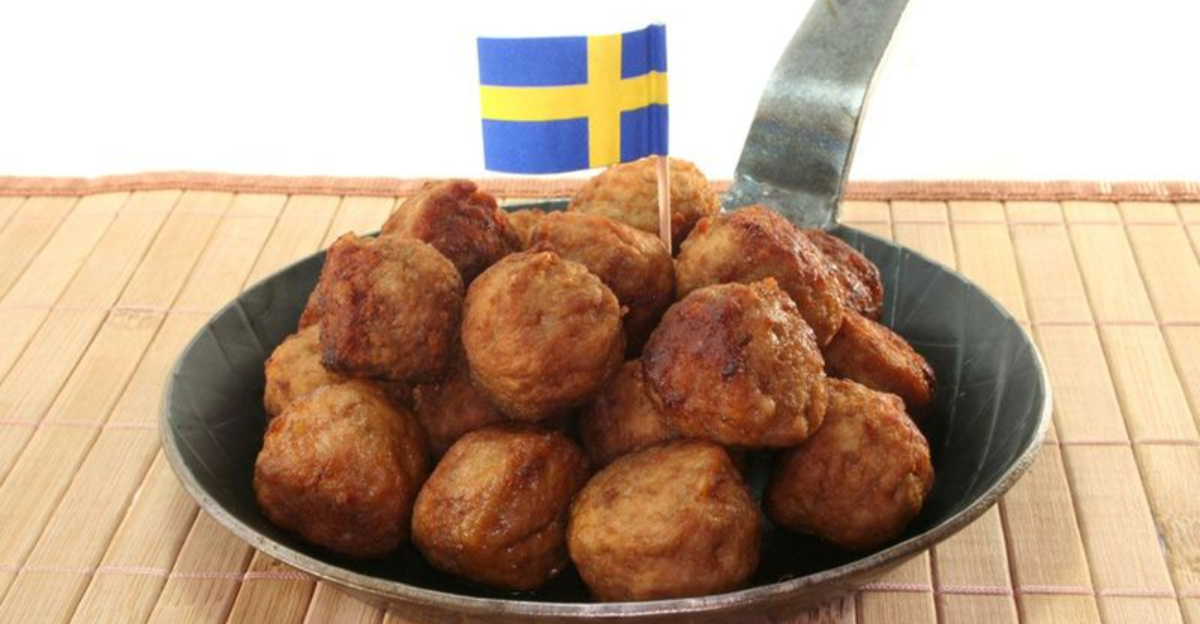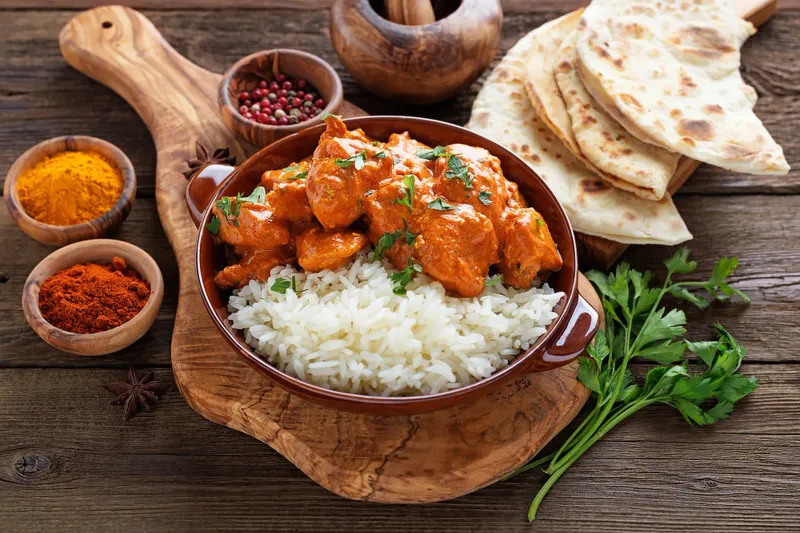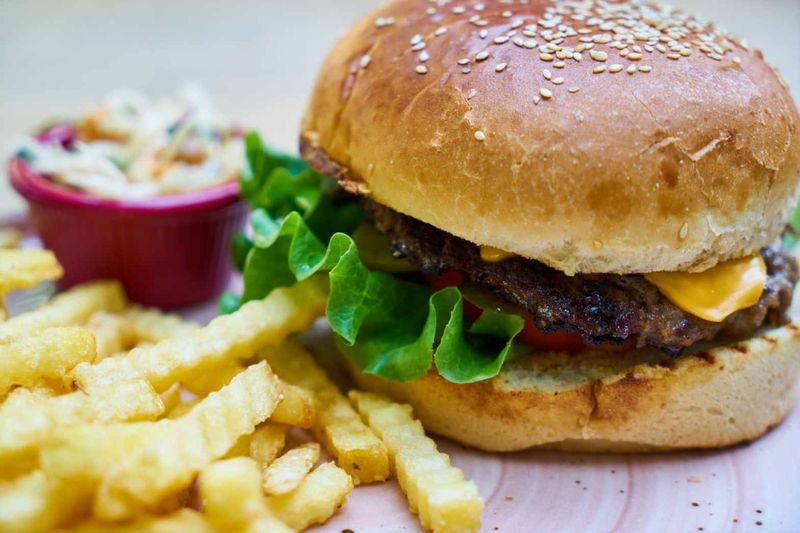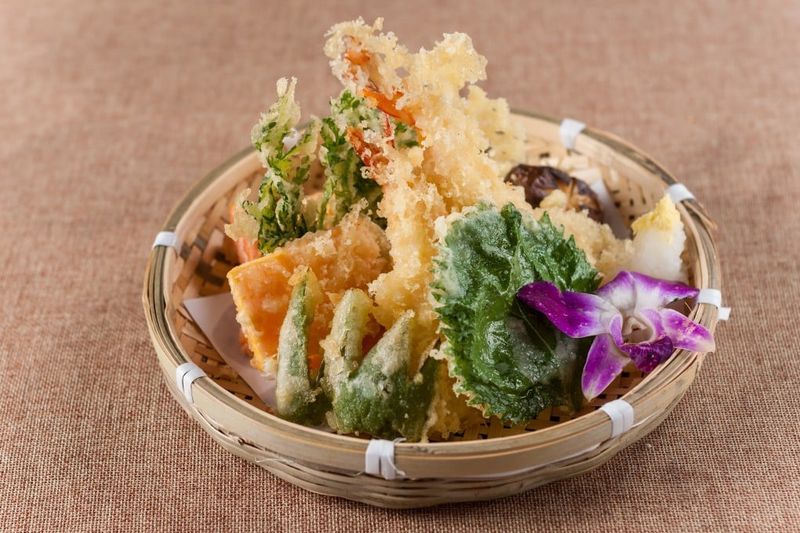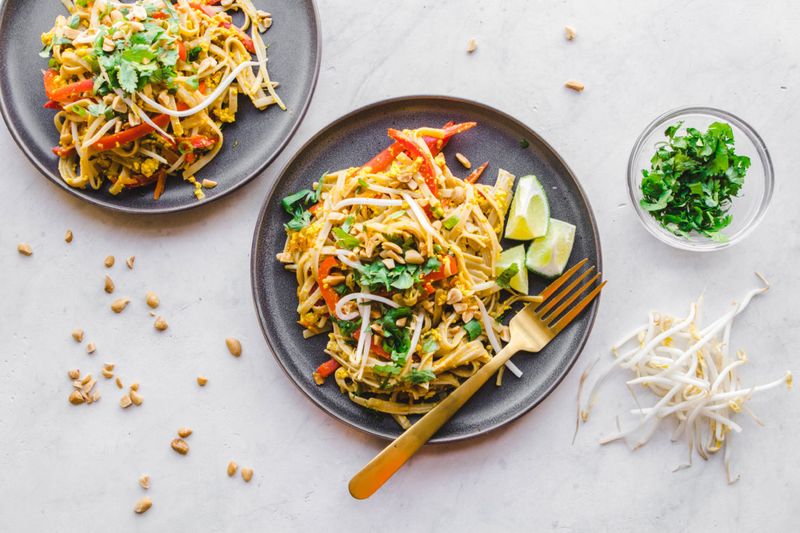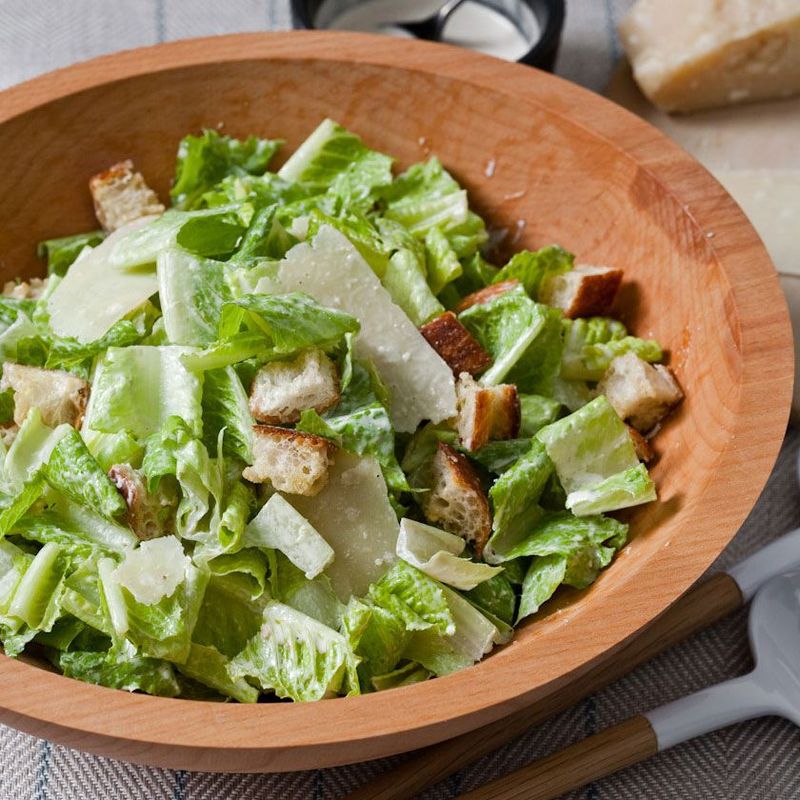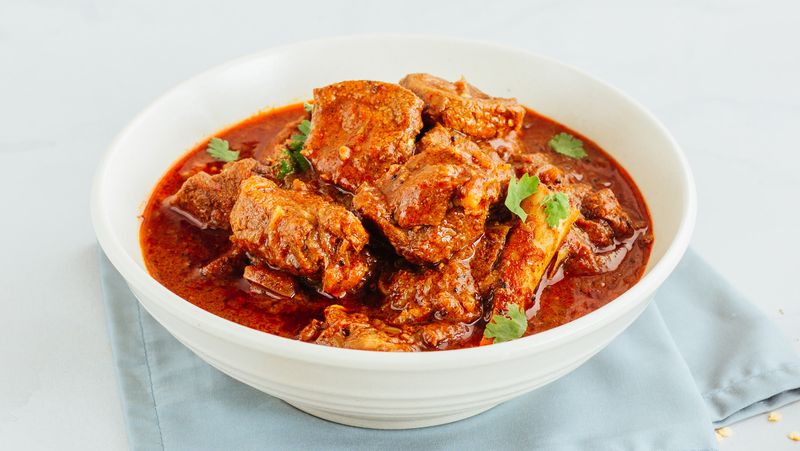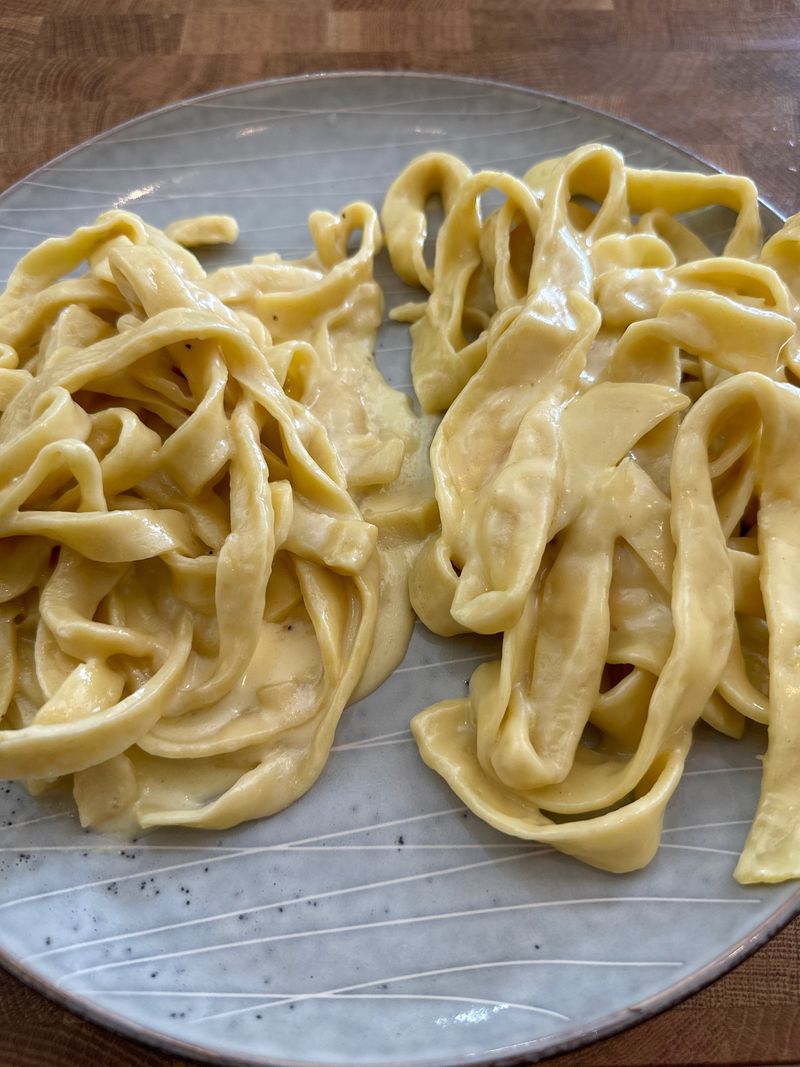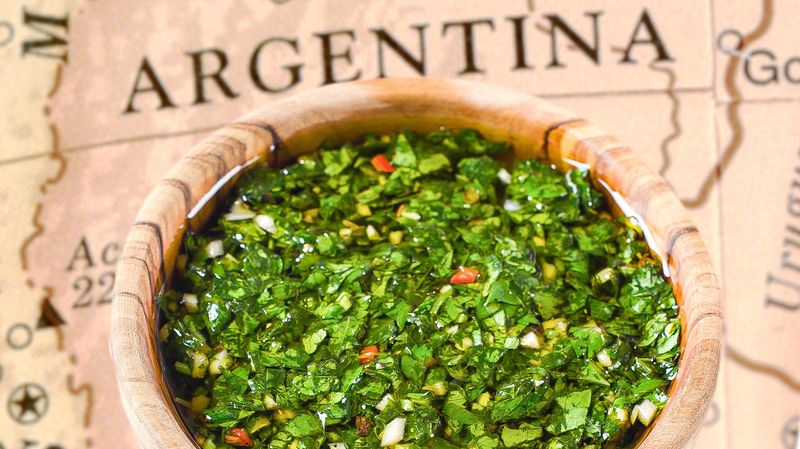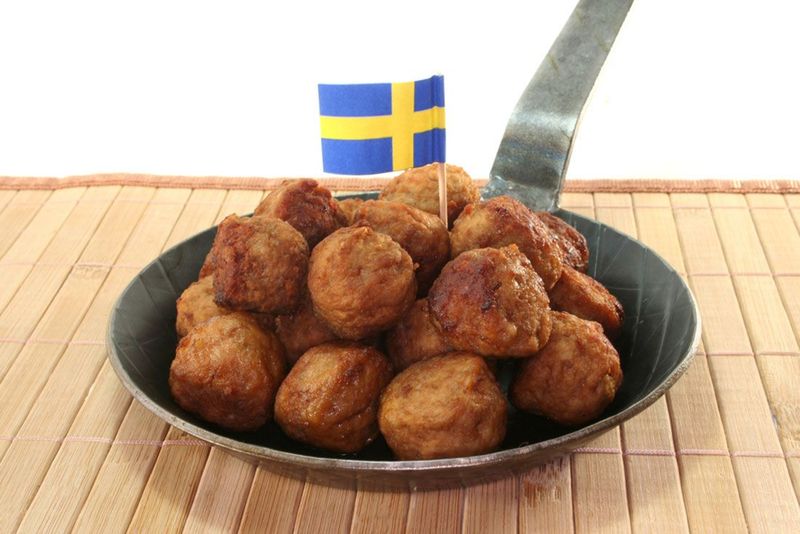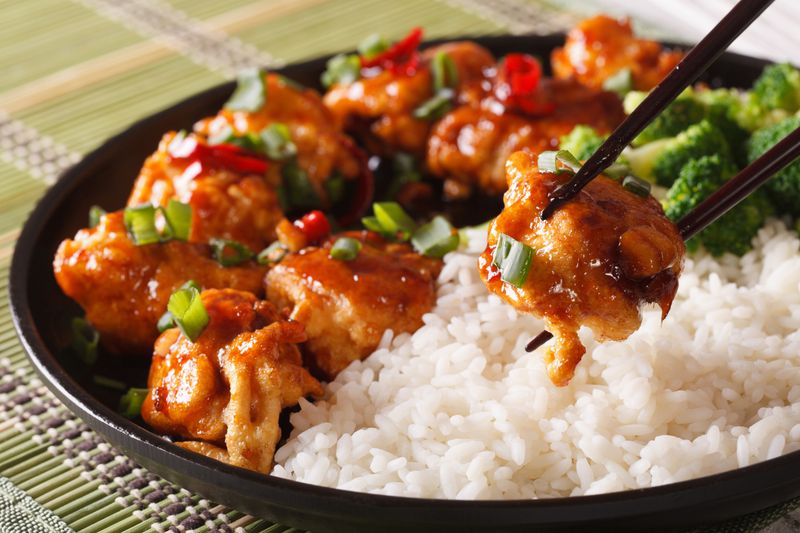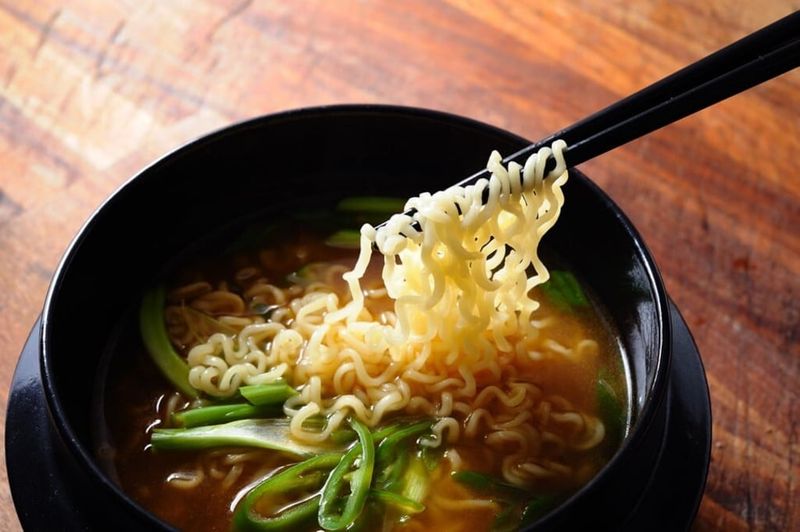Many of the world’s most beloved national dishes have surprising origins that defy the stories we’ve been told. From pastries to pasta, the truth about these culinary delights reveals a rich tapestry of cultural exchange and adaptation. Join us as we explore the real beginnings of 15 famous dishes, each with its unique story and flavor.
1. Croissant (France) – Actually Austrian!
The croissant, synonymous with French culture, actually has its roots in Austria. In the 1830s, Austrian officer August Zang opened a Viennese bakery in Paris, introducing the French to the kipferl. This crescent-shaped pastry captivated the French, who added their buttery touch.
The kipferl, baked since at least the 13th century, was a staple in Austria. French bakers mastered its transformation into the flaky, buttery croissant we adore today.
An international symbol of breakfast elegance, the croissant’s journey from Austria to France is a testament to culinary adaptation and charm.
2. Chicken Tikka Masala (UK) – A British Invention
Chicken Tikka Masala, often hailed as Britain’s national dish, may not be as Indian as it seems. Legend has it that this creamy delight was born in a Glasgow restaurant in the 1970s.
A customer, unsatisfied with his dry chicken, spurred the Bangladeshi chef to concoct a sauce using tomato soup and spices, creating a new dish.
While its exact origins remain debated, the dish symbolizes Britain’s multicultural culinary scene. Its story highlights the improvisation and creativity that define culinary innovation, making it a beloved staple in British cuisine.
3. Hamburgers (USA) – German Roots
The iconic hamburger, a symbol of American fast food, is deeply rooted in Germany. In the 19th century, immigrants from Hamburg brought the concept of minced beef patties to American shores.
While the idea of minced meat was not new, the introduction of the bun at the 1904 St. Louis World’s Fair transformed how we perceive hamburgers today.
This dish’s evolution from German beef patties to the beloved American burger showcases cultural exchange’s power. The hamburger’s journey exemplifies how culinary traditions can be adapted and embraced worldwide.
4. Tempura (Japan) – Portuguese Missionaries
Tempura, a staple in Japanese cuisine, surprisingly owes its origins to Portuguese missionaries. Arriving in the 16th century, these missionaries fried fish during Lent, a practice known as peixinhos da horta.
The Japanese, intrigued by the technique, adapted it, perfecting the light, crispy batter that tempura is famous for today.
A delightful example of cultural exchange, tempura illustrates how culinary practices travel and evolve. The dish, now quintessentially Japanese, owes its unique texture and flavor to this historical fusion of cultures, continuing to delight food enthusiasts globally.
5. French Fries (Belgium, Not France!)
French fries, a staple of fast food, are actually rooted in Belgium. In the late 1600s, villagers began frying thinly sliced potatoes, a practice that would later captivate the world.
During World War I, American soldiers stationed in Belgium tasted these delights, naming them “French” due to the local language.
Despite their name, French fries are a tribute to Belgian ingenuity and culinary skill. This dish’s story is a charming reminder of the cross-cultural connections that shape our favorite foods, proving that sometimes a name is only a small part of the story.
6. Pad Thai (Thailand) – A Government Campaign
Pad Thai, a quintessential Thai dish, was born out of necessity during the 1930s. Amidst a rice shortage, Thailand’s prime minister promoted a new noodle-based dish to foster national identity.
Vendors embraced this, and Pad Thai quickly became a staple, showcasing the country’s flavors and culinary prowess.
Its creation was more than a meal; it was a symbol of unity and resilience. Pad Thai’s story is a testament to how food can inspire national pride and address economic challenges, becoming a cherished part of Thailand’s cultural heritage.
7. Caesar Salad (Mexico, Not Italy!)
The Caesar Salad, often thought to be Italian, actually emerged from a culinary scramble in Tijuana, Mexico. In 1924, Italian-American chef Caesar Cardini crafted this dish amidst a Fourth of July rush.
With limited ingredients at his disposal, he whisked together a simple yet flavorful salad that took the culinary world by storm.
The salad’s creation is a tale of ingenuity, turning scarcity into opportunity. Today, Caesar Salad stands as a beloved dish worldwide, celebrated for its rich yet refreshing flavors and its unexpected Mexican origins.
8. Vindaloo (India) – Portuguese Influence
Vindaloo, known for its fiery kick, has a rich history influenced by Portuguese settlers in India. Derived from “carne de vinha d’alhos,” this dish originally featured meat marinated in wine and garlic.
Goan cooks embraced this, adding local spices to create the spicy, tangy vindaloo adored today.
The dish’s evolution is a testament to the blending of culinary traditions. Vindaloo highlights how cultural exchanges enrich cuisines, offering a deliciously spicy journey that captivates taste buds and tells a story of flavors crossing borders.
9. Hawaiian Pizza (Canada, Not Hawaii!)
Despite its tropical name, Hawaiian Pizza’s origins are far from the islands. In 1962, Sam Panopoulos, a Greek immigrant in Ontario, dared to top pizza with pineapple and ham.
This unexpected combination sparked a culinary debate, yet quickly gained fans for its sweet and savory balance.
Named after the canned pineapple brand used, Hawaiian Pizza is a testament to bold culinary creativity. Its story showcases how innovation in the kitchen can lead to new tastes and traditions, even sparking global pizza controversies.
10. Fettuccine Alfredo (Not Traditional Italian!)
Fettuccine Alfredo, while beloved, is not a traditional Italian dish. In 1914, Alfredo di Lelio in Rome created this creamy pasta, intending it as a comforting meal for his wife.
Hollywood stars fell for its simplicity during their visits, bringing the dish to international fame.
Despite its simple ingredients, Fettuccine Alfredo captivated a global audience, becoming synonymous with elegance. This dish’s journey from a Roman trattoria to worldwide recognition is a tale of culinary simplicity and charm, proving that sometimes less is truly more.
11. Chimichurri (Argentina) – Possibly Irish?
Chimichurri, a staple of Argentine cuisine, has a mysterious origin story. Some suggest its name comes from Irish soldiers requesting “tchimichurri” (“give me curry”).
Others trace it to Basque or Quechua roots, reflecting Argentina’s diverse cultural influences.
This vibrant sauce, rich with herbs and garlic, tells a story of culinary mystery and intriguing etymology. Chimichurri’s tale is one of flavorful invention, highlighting how names and ingredients weave together in the tapestry of Argentine culinary tradition.
12. Swedish Meatballs (Turkey, via Sweden?)
Swedish meatballs, a beloved comfort food, have roots in the Ottoman Empire. In the 1700s, King Charles XII returned to Sweden with the concept of seasoned, spiced meat.
Swedes adapted this, adding cream sauce and lingonberries, creating the dish we know today.
Swedish meatballs’ story is one of culinary adaptation and global influence. From royal banquets to IKEA cafeterias, this dish exemplifies how flavors travel and transform, becoming a cherished part of Swedish identity while retaining a hint of exotic origin.
13. General Tso’s Chicken (USA, Not China!)
General Tso’s Chicken, though named after a Chinese general, is an American creation. In the 1970s, Chef Peng Chang-kuei introduced this dish in New York City, crafting a sweet and spicy harmony.
Adapted for American palates, it quickly became a staple of Chinese-American cuisine.
This dish’s history is a tale of culinary reinvention, showcasing how chefs bridge cultures to create new flavors. General Tso’s Chicken is a delicious example of how cross-cultural creativity can redefine a dish, making it a unique symbol of culinary fusion.
14. Ramen (China, Not Japan!)
Ramen, a beloved Japanese comfort food, traces its roots back to China. Originating as lamian (hand-pulled noodles), it was embraced by Japanese soldiers returning home after World War II.
This adaptation led to the creation of instant ramen in 1958, revolutionizing convenience meals.
Ramen’s journey from Chinese street food to an international staple is a story of adaptation and innovation. This dish illustrates how culinary traditions can be transformed and popularized, offering warmth and flavor across dining tables worldwide.
